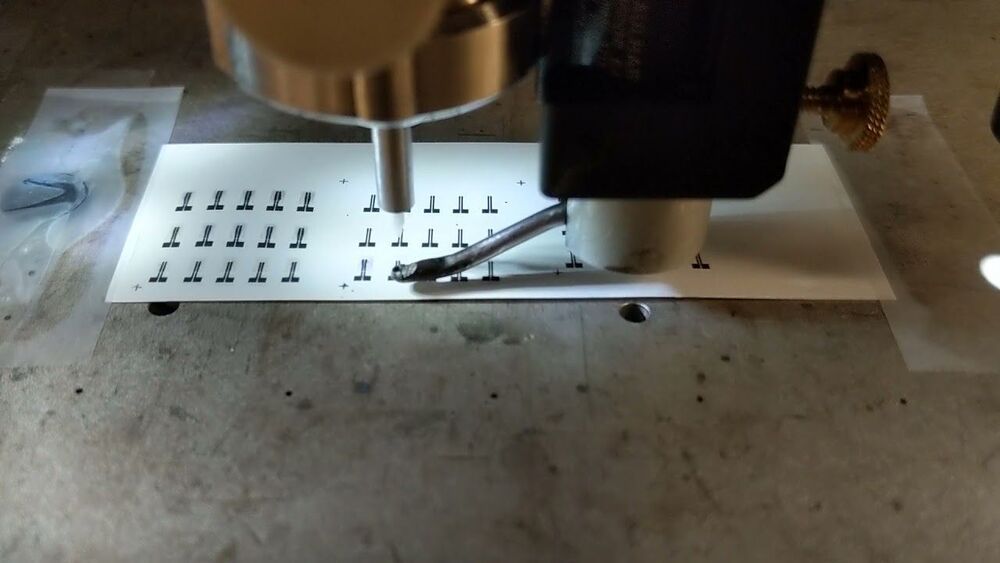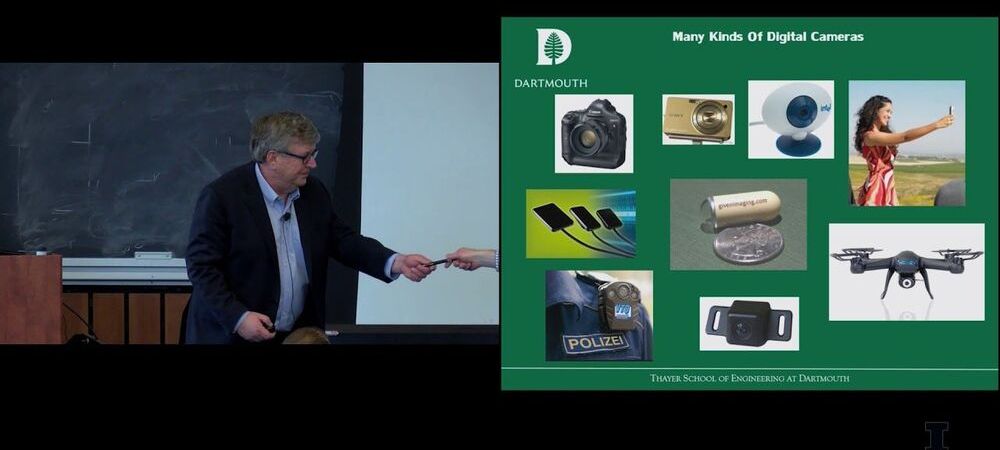May 10, 2021
Printable smartphones are the latest breakthrough in green tech
Posted by Quinn Sena in categories: innovation, mobile phones
The fight against gadget waste is being spurred on by new printable electronics made from wood ink.

The fight against gadget waste is being spurred on by new printable electronics made from wood ink.
The pace of those improvements has slowed, but International Business Machines Corp on Thursday said that silicon has at least one more generational advance in store.
IBM introduced what it says is the world’s first 2-nanometer chipmaking technology. The technology could be as much as 45% faster than the mainstream 7-nanometer chips in many of today’s laptops and phones and up to 75% more power efficient, the company said.
In work that could someday turn cell phones into sensors capable of detecting viruses and other minuscule objects, MIT researchers have built a powerful nanoscale flashlight on a chip.
Their approach to designing the tiny light beam on a chip could also be used to create a variety of other nano flashlights with different beam characteristics for different applications. Think of a wide spotlight versus a beam of light focused on a single point.
For many decades, scientists have used light to identify a material by observing how that light interacts with the material. They do so by essentially shining a beam of light on the material, then analyzing that light after it passes through the material. Because all materials interact with light differently, an analysis of the light that passes through the material provides a kind of “fingerprint” for that material. Imagine doing this for several colors — i.e., several wavelengths of light — and capturing the interaction of light with the material for each color. That would lead to a fingerprint that is even more detailed.
The Enten headphones, which uses a smartphone app, have been developed by US firm Neurable. They can create music playlists based on which songs seem to help the user concentrate dailystar.

One of the interesting consequences of the emergent upshift in visual systems is that all streetlights, car headlights and other external sources of lighting will no longer be needed within around a decade. This will not only make astronomers happy, since they will be able to see the dark skies again but will simplify urban infrastructure. The three convergent elements making this change of affairs come about are the following:
1) Quanta Image Sensors, whether of the SPAD or the CIS-QIS versions are expected to become widely available within 5 to 10 years. Unlike the CMOS image sensors in billions of cell-phone cameras, which only register packets of the incoming light, these sensors can register single photons of light. The most versatile of these are the QIS sensors being developed by Fossum—who also developed the CMOS sensor—wherein a single jot\.
Continue reading “Advances in Detectors: The Quanta image sensor (QIS): Making every photon count” »
Apple announced that it could take a $3 billion to $4 billion hit due to the global chip shortage, but the iPhone will remain unscathed.
An animal scientist with Wageningen University & Research in the Netherlands has created an artificial-intelligence-based application that can gauge the emotional state of farm animals based on photographs taken with a smartphone. In his paper uploaded to the bioRxiv preprint server, Suresh Neethirajan describes his app and how well it worked when tested.
Prior research and anecdotal evidence has shown that farm animals are more productive when they are not living under stressful conditions. This has led to changes in farming practices, such as shielding cows’ eyes from the spike that is used to kill them prior to slaughter to prevent stress hormones from entering the meat. More recent research has suggested that it may not be enough to shield farm animals from stressful situations—adapting their environment to promote peacefulness or even playfulness can produce desired results, as well. Happy cows or goats, for example, are likely to produce more milk than those that are bored. But as Neethirajan notes, the emotional state of an animal can be quite subjective, leading to incorrect conclusions. To address this problem, he adapted human face recognition software for use in detecting emotions in cows and pigs.
The system is called WUR Wolf and is based on several pieces of technology: the YOLO Object Detection System, the YOLOv4 that works with a convolution neural network and Faster R-CNN, which also allows for detection of objects, but does so with different feature sets. For training, he used the Nvidia GeForece GTX 1080 Ti GRP running on a CUDA 9.0 computer. The data consisted of thousands of images of cows and pigs taken with a smartphone from six farms located in several countries with associated classification labels indicating which physical features could be associated with which mood—raised ears on a cow, for example, generally indicate the animal is excited.
This article is part of our new series, Currents, which examines how rapid advances in technology are transforming our lives.
Imagine operating a computer by moving your hands in the air as Tony Stark does in “Iron Man.” Or using a smartphone to magnify an object as does the device that Harrison Ford’s character uses in “Blade Runner.” Or a next-generation video meeting where augmented reality glasses make it possible to view 3D avatars. Or a generation of autonomous vehicles capable of driving safely in city traffic.
These advances and a host of others on the horizon could happen because of metamaterials, making it possible to control beams of light with the same ease that computer chips control electricity.
Li-ion batteries and other emerging lithium-based battery technologies are currently used to power a wide range of devices, including smartphones, laptops, tablets and cameras. Despite their advantages, batteries containing lithium do not always retain their performance over time.
One of the main reasons for the performance decay observed in some Li-based batteries is that the lithium contained within them sometimes becomes inactive or “dead.” This “dead lithium” can cause capacity decay and thermal runaway, which can ultimately reduce a battery’s lifespan and impair its performance.
Researchers at Zhejiang University of Technology in China and Argonne National Laboratory in the U.S. have recently devised a strategy to restore inactive lithium in Li metal anodes. This strategy, outlined in a paper published in Nature Energy, is based on a chemical reaction known as iodine redox.
If you can’t beat ‘em, join ‘em.
Arm is the technology company of the hour. Or one of, at least. The chip designer rose to great heights in the mobile phone biz and now its many license holders are looking to twist an ARM processor into something more computer-shaped. Arm is finding increasing number of advocates from Intel and AMD’s firm customers too: perhaps the most notable among them being Apple, with the M1 chip in MacBooks and the new iMac, but Amazon, Microsoft, and Arm’s prospective buyer, Nvidia, all have skin in the game.
Yet Intel has a plan: a brand new foundry business. That which will offer flexibility in a way that was largely ruled out by oppressive x86 licenses and Intel’s unwillingness to share in the past. It’s what Arm offers, after all. A way for companies to design a chip as they see fit, and leave the unwanted features on the cutting room floor.